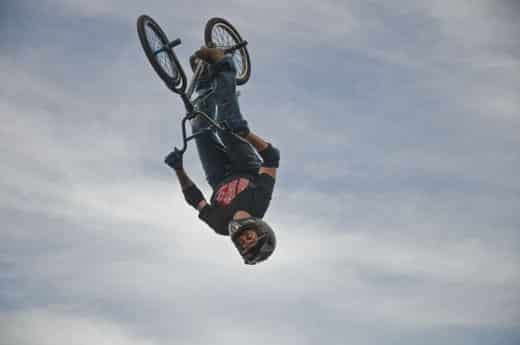Supermarkets, Maslow, Extreme Sports (Part 1)

Many years ago, I began working on a piece based on the simple premise that if we didn’t always wait for a crisis to happen and acted proactively, companies would not only avert crises that could threaten their brands, but manage crises in a manner that actually underscored their beliefs and strengthened relationships with their stakeholders. While this is a fairly common goal for most crisis communicators, I took it one step further by suggesting that the same discipline that helps companies plan effectively for crisis situations can also be used to create world class excellence in any and every aspect of a company’s business.
only avert crises that could threaten their brands, but manage crises in a manner that actually underscored their beliefs and strengthened relationships with their stakeholders. While this is a fairly common goal for most crisis communicators, I took it one step further by suggesting that the same discipline that helps companies plan effectively for crisis situations can also be used to create world class excellence in any and every aspect of a company’s business.
Over the years, I’ve shared this idea with several communication experts and typically received a lukewarm reception. Not because they didn’t find the concept interesting, but because they didn’t believe that company leaders operated this way. They would say that leaders, especially in the US, are much more inclined to focus on the priority of the moment rather than spend time trying to avert a crisis that may never happen, let alone use such a protocol to proactively improve. So, for years, I’ve sat on this idea, only to keep returning to it with the belief that with all the focus today on leadership, we can do better. So over the next several weeks, I’d like to share my thoughts on a supermarket crisis, Maslow’s Hierarchy of Needs Theory, the pursuit of excellence in extreme sports, and how we can bring all of them together to change the way we think about crisis and crisis communication planning to create stronger companies. I appreciate your patience and invite your comments. First, the supermarket:
Many years ago, I sat across the desk from the CEO of a major supermarket retailer which was about to be a target of ABC’s PrimeTime Live. The upcoming investigative report involved whether customers were being properly charged at point-of-sale. Apparently, the shelf price didn’t always match the scanned price, and more often than not, it was in the store’s favor. “Tens of millions of dollars in overcharges, pennies at a time, and the customer is none the wiser. It’s those scanners,” said the ABC promo.
The CEO was quite animated to say the least. But he wasn’t nearly as angry with PrimeTime Live as he was with himself and his senior management team. They all knew there was a problem. (It wasn’t with the scanners by the way, but with assigning enough staff to change shelf tags to reflect weekly price changes in the computer.) Of course, that’s beside the point; as far as ABC was concerned, the customer was getting ripped off.
The CEO asked,” Why did we have to be exposed by PrimeTime Live before we addressed the problem ourselves?” This was particularly relevant because the company had spent hundreds of millions of advertising dollars over the years laying claim to its position as the “low price leader.” He understood, “How can you be the low price leader if your customer believes you have no price integrity?” The upcoming report (which also involved several other retailers by the way) would strike at the heart of the brand.
The issue for our CEO wasn’t only that the network beat him to the punch? The real question was, why wasn’t the senior management team, knowing there was a problem, working toward industry leadership in pricing accuracy? (Especially given its brand position.)
So with the story already “in the can” and having nearly a week to do something before Primetime Live aired in its late night Thursday time slot, the company quickly conducted its own investigation, and within 48 hours developed and implemented a program that enlisted the customer’s participation as a short-term fix. It was called “Keep Us Right.” Store signage and lapel stickers with dollar bills hanging between the sticker and the cashier’s vest, communicated the simple message: “If there’s any discrepancy between the shelf price and the scanned price, the customer will receive the lower price plus a dollar.”
Once the program was in place in more than 1,200 of its stores in the U.S. (just one day before the story aired), the CEO had a letter delivered to the executive producer of PrimeTime Live, stating that the company had conducted its own investigation and outlined the steps the company had already taken to correct the problem.
The story aired as promised with all the negative fanfare the CEO expected. Upon the conclusion of the piece, Diane Sawyer spent the next 30 seconds describing the company’s new program before going to commercial. The company addressed the problem, preserved its credibility, and reaped the benefits of having Diane Sawyer serve as the company spokesperson. (The company was not included in any of the network affiliate copycat stories that swept the country during the following weeks.)
After the story, and since it was now costing the company a dollar per incorrectly priced item, the CEO led a comprehensive effort to develop an industry leading program that underscored price integrity and strengthened its brand. While the supermarket story came to a happy ending, and as the CEO correctly pointed out at the beginning, it all took place in the wrong order. The media exposed the company on an issue that was a well known problem internally.
“Inexcusable,” the CEO said, among other things, when he learned of the PrimeTime Live piece. He was right.
Next week in Part 2, how understanding Maslow can help us look at these situations differently.
Category: Business Growth & Strategy
Tags: crisis, Leadership, Maslow, supermarkets

